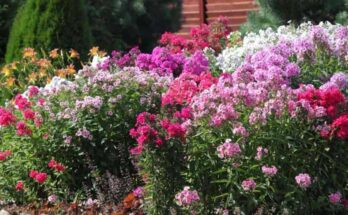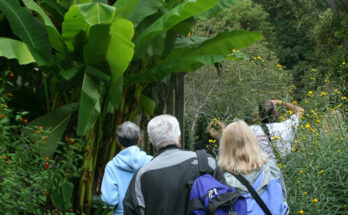Rugged, colorful Lantana is an easy-care tropical plant that has made itself at home in many locations throughout the United States and worldwide.
It can easily be grown as a perennial plant in USDA hardiness zones 8 and above. Lantana does well when planted as an annual in cooler climates.
However, this plant is famous (and sometimes infamous) for its ability to survive and thrive in poor soils and challenging conditions, so you may wonder if fertilizing Lantana is necessary or advisable.
In this article, we will share advice on when and how to fertilize Lantana plants. Read on to learn more.
Can Lantana Plants Do Well With No Fertilizer?
In most cases, Lantana will do well without fertilizer as long as you have soil that is at least fairly good. However, adding organic amendments, fertilizer, and mulch may be helpful and necessary if you have poor soil.
You should lightly fertilize if you are growing it as container plants or in a raised bed.
Remember that in these settings, it is easy for the plants to quickly use the nutrients in the limited amount of soil provided.
What Kind Of Fertilizer Is Best For Lantana?
A granular, slow-release balanced fertilizer works well for these plants. Look for a high-quality general-purpose product with an NPK ratio of 10-10-10 or 20-20-20.
Follow packaging instructions for dosage amounts, and fertilize garden/landscape plants twice per growing season, early spring and mid-summer.
For Lantana in pots and containers, use a half dose and fertilize monthly.
If you prefer, give container Lantanas a full dose of a slow-release fertilizer product early in the springtime. Then, follow up with a light feeding of water-soluble fertilizer bi-weekly or monthly.
Is It Necessary To Fertilize Lantana In A Garden Or Landscape Setting?
In most cases, if your Lantana is planted in light, airy garden soil that has been amended with organic matter, fertilization is not necessary. This is because excessive fertilizer may interfere with your plants’ ability to bloom and make the disease easier to get a foothold.
This is because lots of fertilizer will cause a great deal of foliage to grow rapidly. Unfortunately, this results in weak stems that cannot support blooms or deflect pests and illness.
Even so, a light dose of a balanced fertilizer in the springtime may be helpful. You can follow this up with another treatment mid-summer unless your area suffers from drought.
Why Shouldn’t You Fertilize Lantana During A Drought?
Moist soil delivers nutrients evenly to plants’ roots. Adding fertilizer to dry soil runs the risk of causing fertilizer burn damage to the plants’ roots.
For this reason, it is always wise to keep your Lantana well-watered but never soggy. Soggy soil leads to fungal infections and root rot.
Establish a soak-and-dry watering schedule wherein you water thoroughly whenever the top couple of inches of soil are dry to the touch.
The exact timing of watering will vary depending on your local climate, the placement of plants, and whether or not your plants are in containers.
Ensure a thorough, deep watering after fertilizing to help the product soak deeply into the soil. Good watering will ensure that the fertilizer is distributed evenly and will not burn the roots.
TIP: Avoid overhead watering. Soak the soil, not the plant’s leaves. A soaker hose concealed under organic mulch is a water-wise arrangement.
Organic Mulch Protects Roots, Conserves Water & Provides Nourishment
There are many advantages to adding a 3″ or 4-inch layer of organic mulch to the surface of the soil surrounding your Lantana plants, such as:
- Mulch helps prevent excessive evaporation of moisture.
- Mulch protects plant roots from excessive heat and cold.
- Mulch blocks weed growth and keep your garden nice looking.
In addition to these advantages, depending upon the type of mulch you use, mulching can give a second life to organic matter that might otherwise end up taking up space in the landfill.
Examples are:
All of these make excellent organic mulch and are absolutely free.
Other types of organic mulch which you can purchase include:
These organic materials can be used separately or in combination. All will protect your plants’ roots while gradually decomposing and adding nourishment to the soil.
Mulch early in the springtime and again just before winter. Turn the existing mulch into the soil before adding a new layer. You can replenish organic mulch at any time when it seems to have broken down a great deal.
TIP: Know your source! When sourcing organic mulch, take care not to use materials that contain weed seeds, herbicides, chemicals, pests, or diseases.
Well-Cared-For Lantana Adds And Attracts Color And Beauty In Your Landscape
If you live in a tropical region, you can count on Lantana to bring abundant blooms to your yard and garden year-round.
In cooler settings, this cheery, easy-care plant grows quickly and provides lovely and colorful rewards even in a limited growing season by attracting bees, butterflies, hummingbirds, and other pollinators.
Follow the advice presented here to fertilize Lantana correctly for the strongest growth and most abundant blooms.
Source link
Originally posted 2022-11-19 20:30:09.





